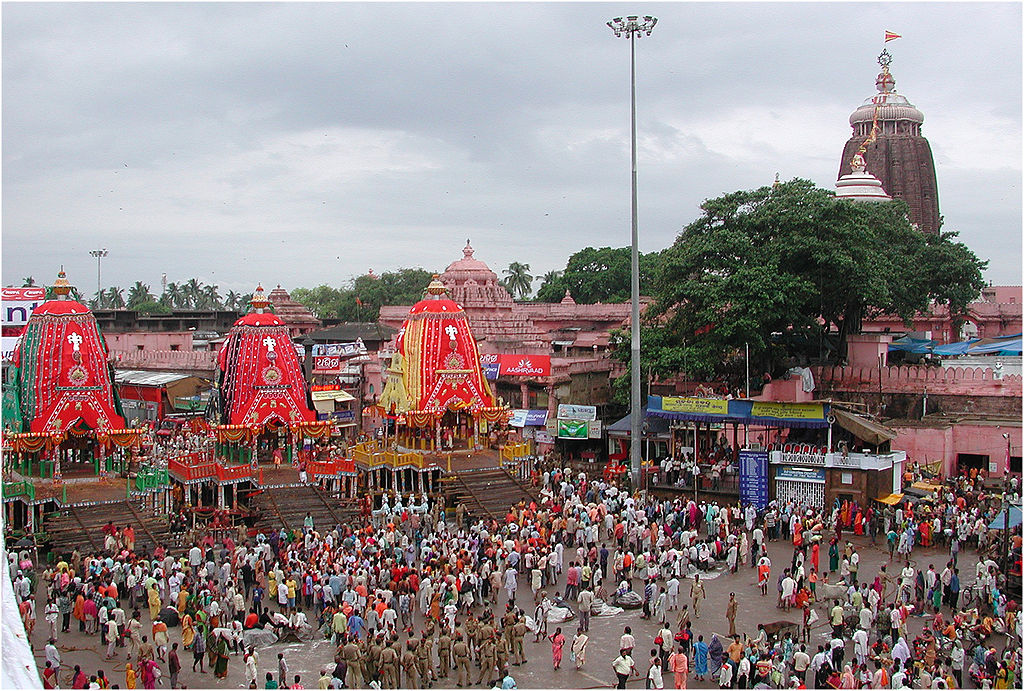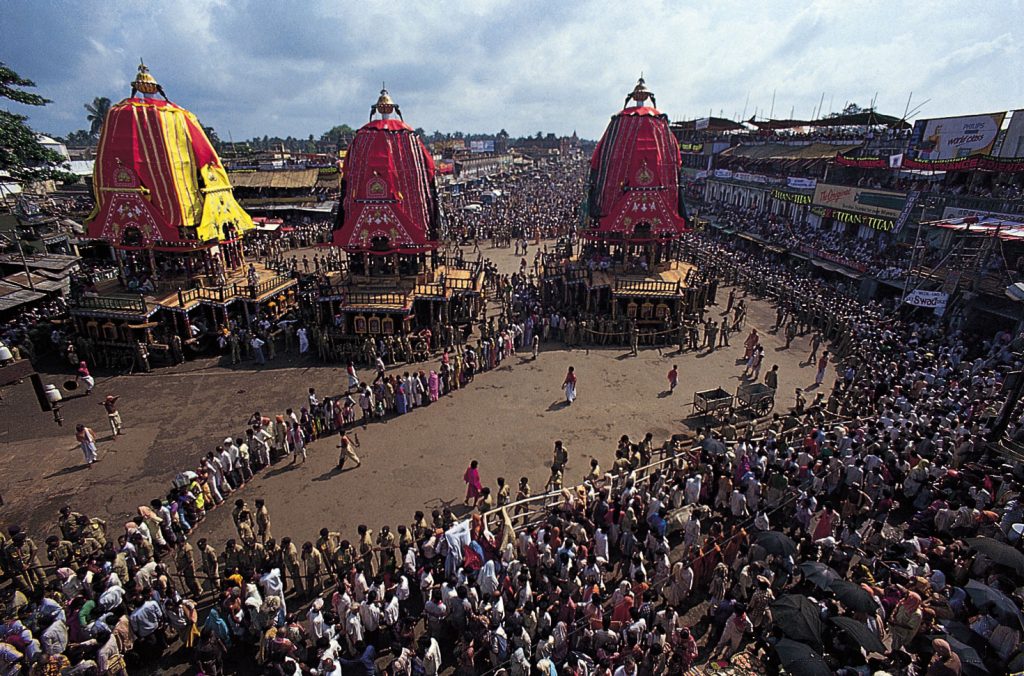The Rath Yatra or Chariot Festival held in Puri is very famous and is known as the Lord Jagannath Rath Yatra. It is a Hindu festival held in the months of June or July and is popular world over. It is an event that commemorates the annual visit of Lord Jagannath, Lord Balabhadra and Devi Subhadra to Gundicha Temple via Mausi Maa Temple.
This is the sole festival in the world where deities are taken out of temples to visit devotees, and it’s also the largest chariot procession in the world.Legend says it always rains on the day of the procession.

Millions of people come to watch as the Puri King sweeps the road with a Gold mop and three massive 18-wheeled chariots bearing the sibling deities make their way through massive crowds. Their chariots, which are mini architectural marvels, are constructed over 42 days from over 4,000 pieces of wood by the sole family that has the hereditary rights to create them.
You can read our another post on Progress of Bee Keeping in Odisha
The Legend of the Sibling Deities
These three deities are the only idols that are fashioned from wood, cloth and resin. They are half torsos with large heads and no arms: reminders of the legend of an impatient King and Queen.
The actual story begins when Krishna was cremated. It is believed that his elder brother Balram and younger sister Subhadra were deeply saddened by Krishna’s death and hence they tried to drown themselves into the Dwarka River with Krishna’s mortal body. And on the same day, in another part of India, King Indradyumna of Jagannath Puri had a vision that the body of Krishna will float up to the shores of Puri as a log, which he should build statues of Krishna, Balaram and Subhadra.
Indrayumna decided to make a temple to house the log. His next task was to find someone to craft the idols from it. Legends say that Vishwakarma, God’s own architect, arrived as an old carpenter. He agreed to carve the idols, but on the condition that he was not to be disturbed at all. However, when he did not emerge from his workshop for weeks, going without food, water or rest, a worried and impatient Gundicha, wife of Indradyumna, asked the King to break open the doors.
His workmen broke open the door to find the room empty, except for three wooden idols..At the time the idols were only half-finished. Still, believing the idols to be made from the very body of God, the King sanctified them as Jagannath, Balabhadra & Subhadra and placed them in the temple.
Why and When Rath Yatra is Celebrated?
This ritual takes place when the extra month (adhika maasa) is meant to align the Hindu lunar calendar to the solar cycle, which appears in the summer which makes two months of Ashadha (June-July), not just the one.
Every year, during the month, when the summer is at its height, the deity and his siblings step out to bathe in public, unable to bear the heat inside the temple. This is called Snana Purnima.

Then, for the fortnight that follows, Jagannatha and his siblings take ill after they bathe with 108 pots of water under the blazing sun, and are kept in a recovery chamber called anasara ghara where they contract fever.
When they recover, their appetite returns and they wish to eat the food cooked by their aunt Gundicha, whose house is a little away from the Jagannatha temple.
For this journey to their aunt’s house, rathas are built and the deities come out of their abode to go meet their aunt and in the way bless the million eyes watching them not just live in Puri, but also looking at the TV/Computer screen with folded hands and teary eyes adoring the Jagga Kalia, thus celebrating it as Rath Yatra.
This year due to the COVID-19 pandemic the Supreme Court of India mandated that the Ratha Yatra be performed without public participation. Therefore, only Jagannath Temple sevakars were actually involved in the Yatra itself, pulling the chariots. The devotees had to rely on Live TV and livestreaming over the internet.
More: Wanted to download Odishashop.com visit here

